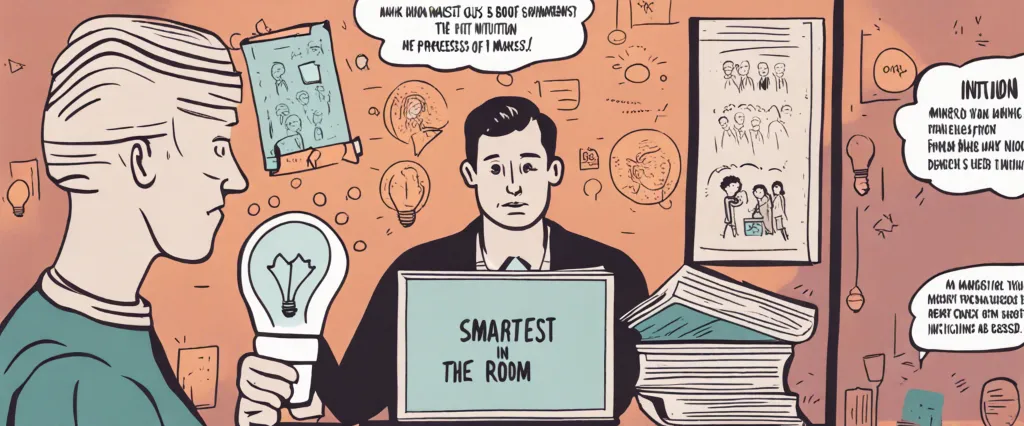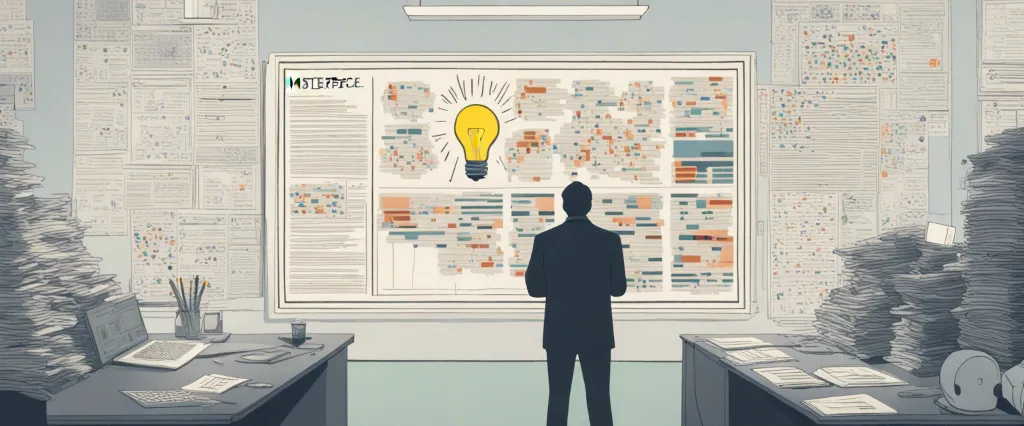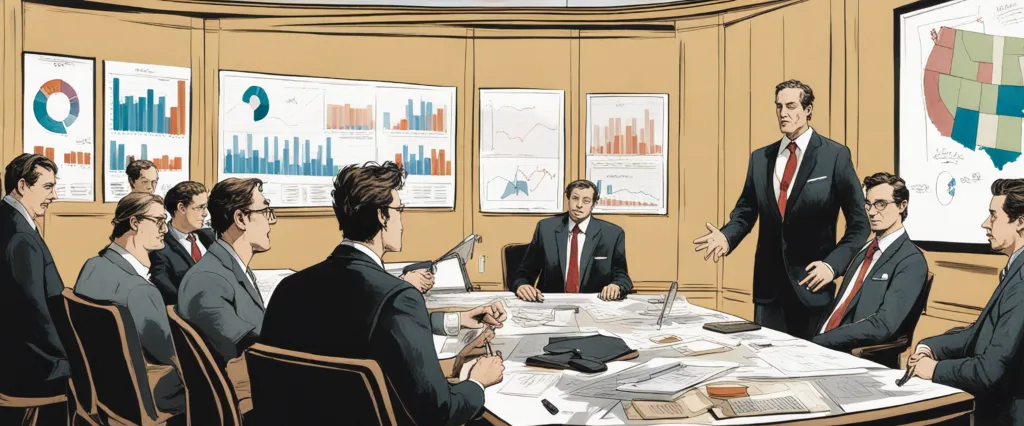——The Smartest Guys in the Room by Bethany McLean & How the Mighty Fall by James C. Collins

In the realm of corporate success and failure, two prolific authors have illuminated the intricacies and pitfalls of the business world in their respective works. Bethany McLean’s “The Smartest Guys in the Room” and James C. Collins’ “How the Mighty Fall” delve into the captivating narratives of corporate giants and their eventual demise. Both books serve as cautionary tales while dissecting the causes and consequences of these catastrophic collapses. By examining the rise and fall of companies such as Enron and examining the stages of decline, both McLean and Collins present readers with valuable insights into the factors leading to corporate downfall. Through their distinct perspectives and analytical framework, these authors shed light on the critical mistakes and character flaws that ultimately catapulted once-thriving businesses into failure. This comparative study seeks to explore the similarities and differences in the authors’ approaches, shedding light on the lessons that can be gleaned from these captivating accounts of triumph-turned-tragedy. Understanding the contrasting viewpoints offered by McLean and Collins will enrich our understanding of the mechanisms that drive both corporate success and failure, allowing us to navigate the treacherous waters of the business world with greater insight and wisdom.
Brief Summary of Two Books
The Smartest Guys in the Room by Bethany McLean
“The Smartest Guys in the Room: The Amazing Rise and Scandalous Fall of Enron” by Bethany McLean is an investigative book that examines the rise and fall of Enron, one of the largest energy companies in the United States during the late 1990s and early 2000s.
The book starts by introducing the key players in the company, including CEO Jeffrey Skilling, Chairman Kenneth Lay, and CFO Andrew Fastow. It explores the culture of arrogance and greed that permeated Enron’s corporate culture, as well as the company’s aggressive and complex accounting practices.
McLean explains how Enron was able to manipulate its financial statements by creating numerous off-balance sheet entities and using mark-to-market accounting. This allowed the company to keep massive debts and losses hidden from investors, while reporting significant profits and inflating stock prices. Enron’s executives, often considered the “smartest guys in the room,” presented a picture of success and innovation to Wall Street and the public, attracting massive investments.
However, as the financial house of cards began to crumble, whistleblowers within the company started to reveal the truth. The stock price began to plummet, and Enron faced an impending financial crisis. In December 2001, Enron filed for bankruptcy, resulting in the loss of jobs, life savings, and investments for tens of thousands of employees and investors.
McLean then covers the aftermath of the scandal, focusing on the investigations, trials, and the ultimate convictions of several key Enron executives. The book also delves into the failures of the auditors and regulatory bodies that overlooked or enabled Enron’s fraudulent practices.
“The Smartest Guys in the Room” serves as a cautionary tale about the dangers of corporate greed, the need for proper oversight, and the devastating consequences of unethical behavior. It highlights the ways in which Enron’s actions impacted the energy industry, financial markets, and public trust in corporations.
How the Mighty Fall by James C. Collins
“How the Mighty Fall” by James C. Collins is a book that explores the reasons behind the decline and ultimate failure of once-great companies. The author draws upon extensive research and analysis of numerous case studies to understand the patterns and stages that lead to the downfall of previously successful organizations.
Collins identifies five stages of decline that companies commonly experience. These stages include hubris born of success, the undisciplined pursuit of more, denial of risk and peril, grasping for salvation, and capitulation to irrelevance or death. Through these stages, the book examines how subtle vulnerabilities can build up over time, causing a company to gradually lose sight of its core values and principles.
The author emphasizes that some of the most successful companies are not immune to failure, and their decline often happens due to internal factors rather than external forces. Collins highlights the importance of leadership and discipline in maintaining the integrity and success of a company. He argues that leaders must have humility, constantly remain vigilant, confront brutal facts, and make tough decisions in order to prevent deterioration and sustain long-term success.
Ultimately, “How the Mighty Fall” provides readers with insights into the warning signs and pitfalls that lead to the downfall of great companies, as well as advice on how to avoid these traps and sustain lasting success.
Comparison between Two Books

Similarities in Crisis Management
The books “The Smartest Guys in the Room” by Bethany McLean and “How the Mighty Fall” by James C. Collins both offer valuable insights into crisis management. Despite their different subject matters, these books share similarities in their approach to understanding and navigating crises.
1. Examination of leadership: Both books highlight the crucial role of leadership during periods of crisis. They emphasize that strong leadership with a clear vision and the ability to make tough decisions is essential to effectively manage a crisis. In “The Smartest Guys in the Room,” the book scrutinizes the leadership of Enron’s executives, showcasing their lack of ethical conduct and decision-making capabilities. In “How the Mighty Fall,” Collins examines various cases of failed leadership, demonstrating that preserving humility and a will to learn is critical in adverse situations.
2. Focus on culture and values: Both books recognize the significance of corporate culture and values during a crisis. They delve into how a culture that promotes integrity, transparency, and accountability can prevent or mitigate crises. “The Smartest Guys in the Room” sheds light on Enron’s toxic culture that fostered excessive risk-taking and unethical behavior. Similarly, “How the Mighty Fall” discusses how a decline in core values can lead to organizational turmoil and eventual collapse.
3. Emphasis on early detection and prevention: Both books stress the importance of early detection and prevention in crisis management. They argue that an organization must remain vigilant and proactive, continuously assessing risks and potential vulnerabilities. “The Smartest Guys in the Room” highlights how Enron’s questionable accounting practices were initially overlooked, leading to a catastrophic financial meltdown. In “How the Mighty Fall,” Collins presents the concept of “Stage 1” decline, emphasizing the need for early recognition of warning signs and proactive actions to prevent further deterioration.
4. Learning from past mistakes: Both books advocate for learning from past mistakes and failures to develop resilience and improve crisis management. “The Smartest Guys in the Room” examines the Enron scandal as a cautionary tale, urging readers to understand the root causes and red flags that ultimately led to the crisis. “How the Mighty Fall” presents a framework for learning from failure, emphasizing the importance of humility, rigorous analysis, and adaptation to prevent future crises.
In conclusion, “The Smartest Guys in the Room” and “How the Mighty Fall” share several similarities in their approach to crisis management. Both books highlight the importance of strong leadership, a healthy corporate culture, early detection and prevention, and learning from past mistakes. By considering these shared perspectives, readers can gain valuable insights into effective crisis management strategies.
Divergences in Crisis Management
The Smartest Guys in the Room by Bethany McLean and How the Mighty Fall by James C. Collins are both insightful books that explore different aspects of business leadership and corporate failures. While there are similarities in terms of analyzing the downfall of a company, one key divergence can be observed in their approach to crisis management.
McLean’s The Smartest Guys in the Room is a detailed account of the Enron scandal, focusing on the unethical practices and deceitful behaviors that ultimately led to the company’s collapse. The book highlights the lack of effective crisis management within Enron’s leadership. It suggests that the company’s executives, including Kenneth Lay and Jeff Skilling, manipulated financial data and deceived stakeholders to maintain an appearance of success. However, when the crisis struck, Enron’s leadership failed to take responsibility and adopt a proactive crisis management approach. Instead, they resorted to denial and attempted to cover up the extent of their wrongdoings. McLean portrays Enron’s leadership as not only lacking ethics but also being ill-prepared to handle a crisis.
On the other hand, Collins’ How the Mighty Fall seeks to identify the patterns that lead to corporate decline and provide insights into how companies can avoid or recover from such crises. Collins argues that organizations often fail to recognize early warning signs and take swift action when faced with a crisis. However, the book stresses the importance of crisis management and highlights cases where companies successfully turned around their fortunes by confronting the crisis head-on. Collins emphasizes the significance of honest self-reflection and a willingness to make difficult decisions in the face of adversity. His work offers a roadmap for organizations to navigate through crises and emerge stronger.
The main divergence between these books lies in their portrayal of crisis management. McLean’s The Smartest Guys in the Room paints a picture of crisis mismanagement, where leaders engage in unethical practices and evade responsibility when facing a crisis. In contrast, Collins’ How the Mighty Fall emphasizes the role of crisis management in preventing and recovering from a downfall, providing lessons on how organizations can learn from their mistakes and adapt to changing circumstances.
In summary, while both The Smartest Guys in the Room and How the Mighty Fall examine corporate failures, they diverge in their approach to crisis management. McLean’s book highlights Enron’s leaders’ lack of crisis management skills and ethical behavior, while Collins’ book emphasizes the importance of proactive crisis management and learning from mistakes.

Conclusion
It ultimately depends on your personal preferences and interests.
“The Smartest Guys in the Room” by Bethany McLean is a book that delves into the story of the Enron scandal, exploring how various individuals were able to deceive investors, employees, and regulators. It provides insights into corporate corruption, unethical practices, and the downfall of Enron. If you are interested in understanding the inner workings of a major corporate scandal and its implications, this book may be worth reading.
On the other hand, “How the Mighty Fall” by James C. Collins focuses on the stages of decline that companies go through, offering a framework to understand and prevent organizational decline. It examines why large, successful companies sometimes fail and provides lessons on how to avoid similar pitfalls. If you are interested in learning about the factors that can lead to the downfall of successful companies and how to prevent them, this book could be more suitable for you.
Both books offer valuable insights, but ultimately, it depends on your specific interests and what you are hoping to gain from reading.


